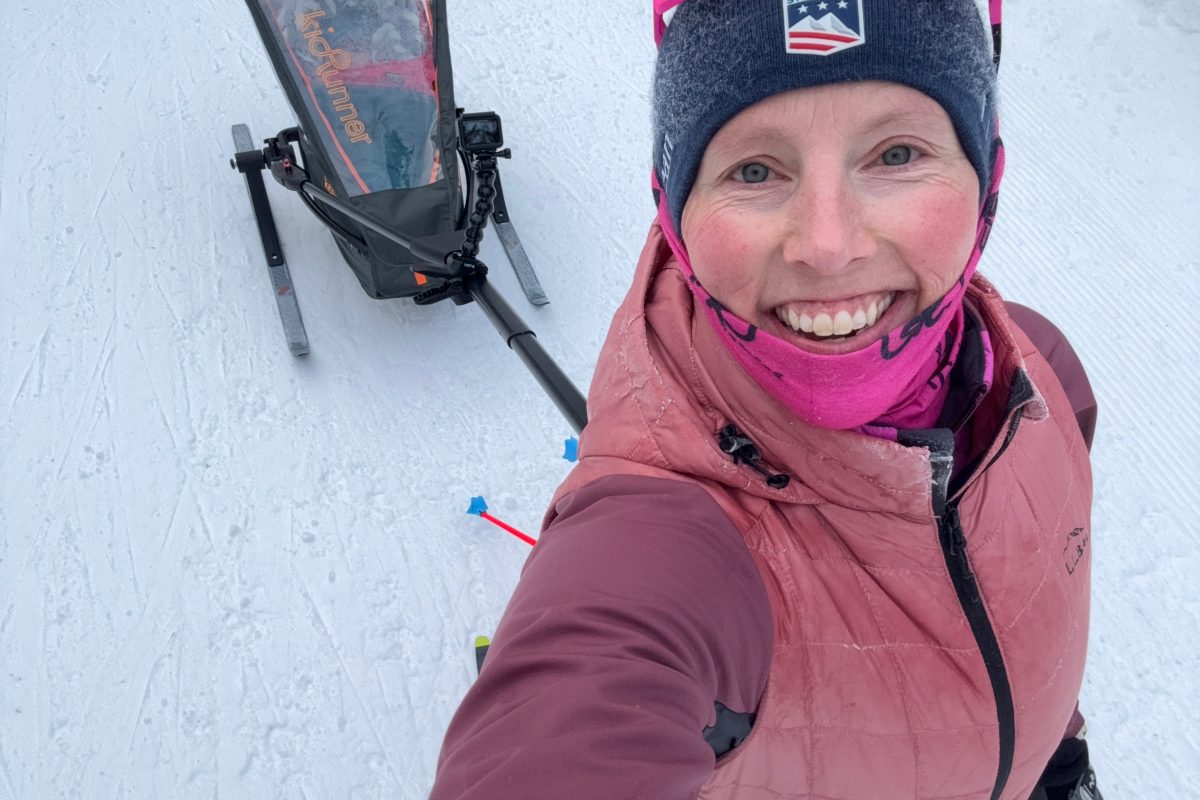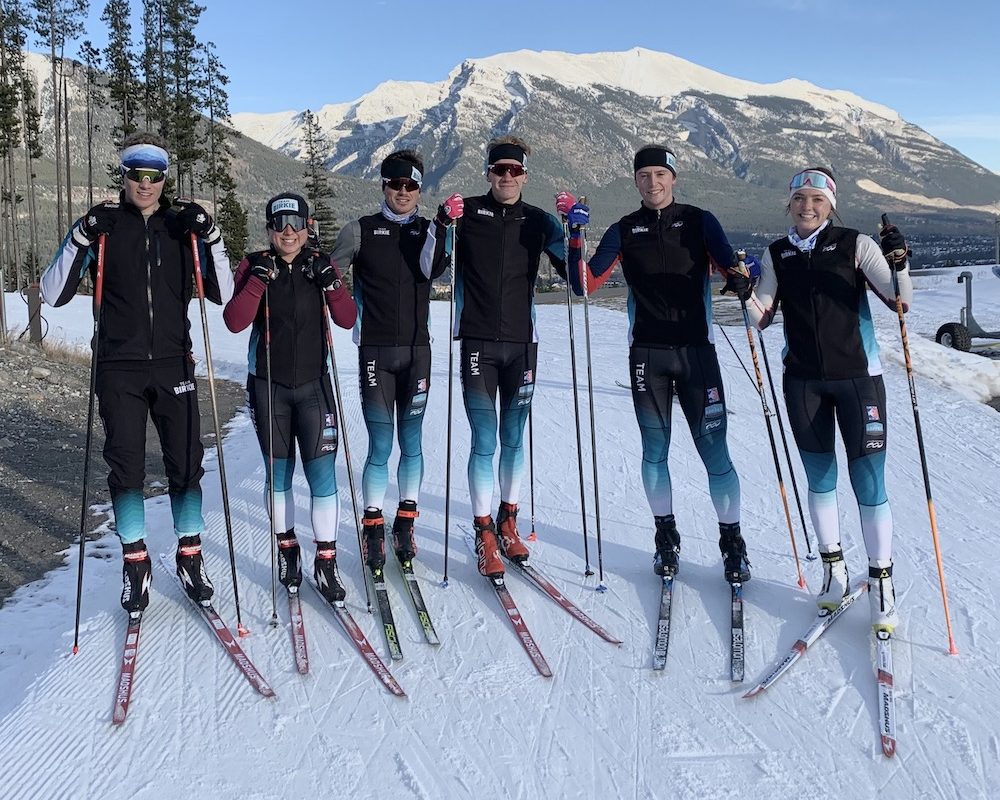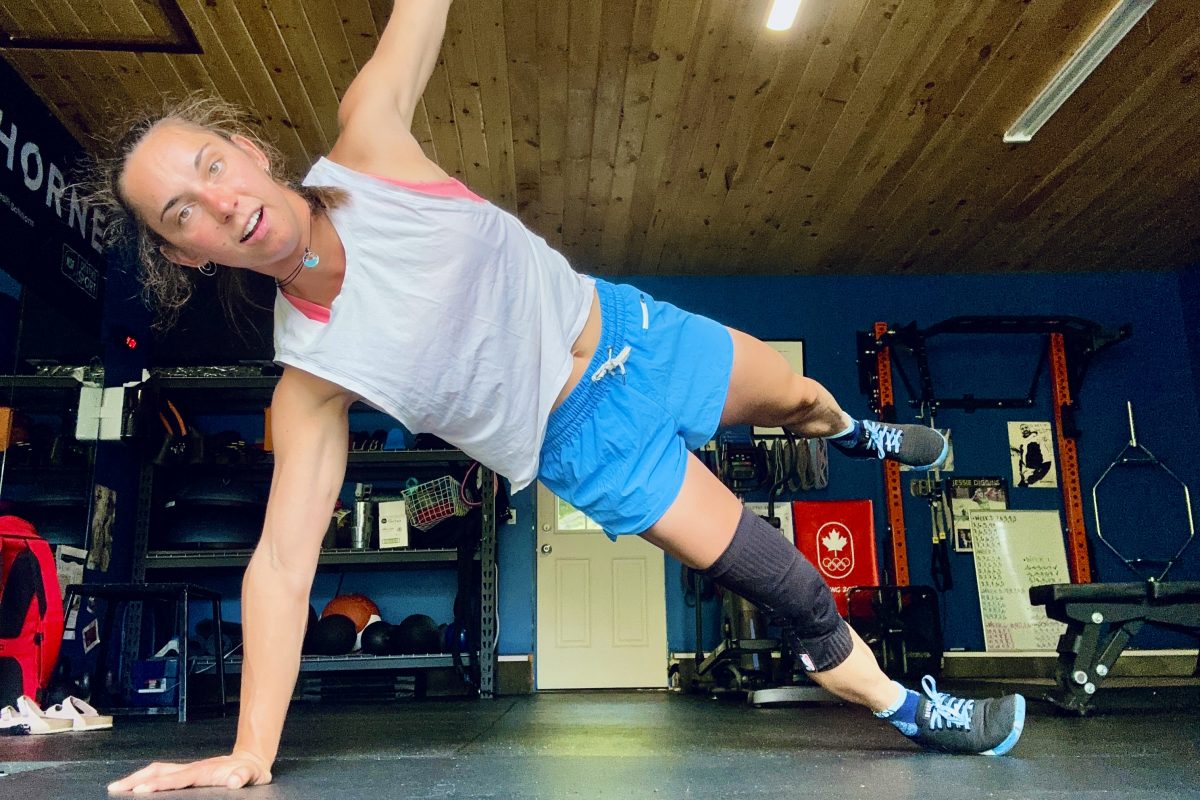Smart Training: Real improvements come from hard work and 10 months of smart
specific training.
The first of FasterSkier’s three camps to aid skiers at any level was
held June 12 to 15th in Park City, Utah. This was a dry-land camp with rollerski
technique training, training and training methods as the main focus.
A Few Great Athletes
Participants included a medalist from last seasons Masters Nationals in Anchorage,
Alaska, one of the top Salomon Series skiers from Colorado, a former World Amateur
Triathlon Champion and British Modern Penthatlon National team member and some
local talent.
Some campers were seasoned roller skiers and others were just getting started
with both classic and skate roller-skiing.
The coaches were John Aalberg and myself.
The Training
This was truly not a camp for people that only want to sit around and watch
ski videos and hear us talk about training – it was a camp for those who
want to make a change and improve through active technique work and drills on
the Soldier Hollow roller-ski course. It was also for those who want to get
fitter and race faster and realize that “real improvements” will
only occur if the training is done right.
Workouts included rollerski intervals, running intervals/max heart-rate test,
technique and distance roller-skiing, max and sub-max weight training at a training
center, a two- hour distance running sessions and speed training on rollerskis.
Short mid-day class room sessions included video-review, training planning and
a great Olympic overview by John. Some of the Olympic photos and videos he showed
are still exciting to me even after being there in 2002 and seeing his presentation
a few times at camps like this last year. It’s hard to watch Thomas Aalsgaard’s
and Beckie Scott’s finishes in the relay and pursuit without wanting to
put in a few more training hours this summer and fall.
Why go to Camps
As coaches we often see that many skiers have a desire to ski fast when the
snow is on the ground; however in the summer they prefer to work out without
specifically “thinking snow”. They bike, run and occasionally
do a fall competition of some kind and then signs up for a November or December
technique camp. Well that works only to a certain degree since being aerobically
fit but not specific fit will only give limited progress in ski racing. True
progress will only occur if you do year-round specific ski-training or at least
let a (good) portion of your summer and fall training be ski related. Being
ski related/specific means that a certain percent of the training should be
done in rolling terrain that simulates ski terrain, rollerskiing is a must to
develop specific strength and a variety of training methods like uphill and
rolling terrain intervals needs to be involved. The training also needs to progressively
get harder/more specific toward THE START OF THE RACE SEASON.
Train at the right intensity
We often see that the same skiers that works their butts of in ski races and
even ski technically well makes little or no progress from one year to the next
even when the make and effort and bumps up the hours. Lack of progress from
our viewpoint has a lot to do with not developing a high MaxVo2 and good endurance.
A few typical mistakes when choosing training intensities are:
– “Always training at the same intensity”.
To us it looks like the majority of XC skiers are training at hearts rates –
around 20-45 beats from max – I’m not talking about the elite. These
heart rates develop a certain level of endurance but are not hard enough to
push your max Vo2 to new heights. It might also be a bit too hard if you are
training many hours per week. This mostly “in the middle training”
makes you good at going medium fast but not really fast.
-“Not knowing your threshold and/or your real max heart-rate”
Max heart/race-threshold and lactate acid levels in your muscles are used to
determine your training zones and to train at the theoretical ideal heart rates
in distance, intervals, pace workouts and time-trials. Very few have access
to a lactate analyzer but everyone with a heart-rate monitor can test their
max HR and calculate their threshold.
We often see however that skiers miss-interpret the expression MaxHeart-rate
and think it’s something like; the highest heart rate seen last week or
in a certain workout. It’s not – Max heart rate is found by pushing
your heart to the max through a real test or a few super hard intervals –
it’s all out! Using percentages for your different training methods from
an inaccurate max heart-rate will of course make your chosen intensity scale
inaccurate. If you choose too low like 180 when its really 190 – you will
train to easy in most sessions especially when the intention is to go hard and
if you choose 200 when it’s 190 you’ll be “killing yourself”
trying to be at 90-95% of max when you want to develop your max Vo2. 90-95 will
instead be 95-100% – try to do that for a 5 x 4 minute interval session!
We will cover max Heart rate, intensity scale as well as lactate testing in
upcoming articles.
How to get going on year-round training
There are many coaches around the country that offers both good masters programs
as well as elite related programs or have great qualifications to coach those
with that type of ambitions. I can’t mention all of them in this article
but here is a handful – I’ll be happy to make a list with names,
phone number, state, towns and e-mail address for other coaching programs in
the US and Canada – Coaches send me some information if you want
to be “listed”
Sun Valley, Idaho – John Engen/Muffy Ritz
Anchorage, Alaska – Jim Galanes
Mammoth Lakes, California – Nancy Fiddler
Bend, Oregon – John Downing/ Ben Husaby
Winthrop, Washington – Leslie Thompson/Laura McCabe/Scott Johnston
No coaches in your area:
Check out the How to, When to, Why to training book and training videos on www.torbjornsport.com
Our Next Camp
The next FasterSkier camp in Park City is coming up in September. We are limiting
the number of participants to 20 so don’t wait to sign up.






